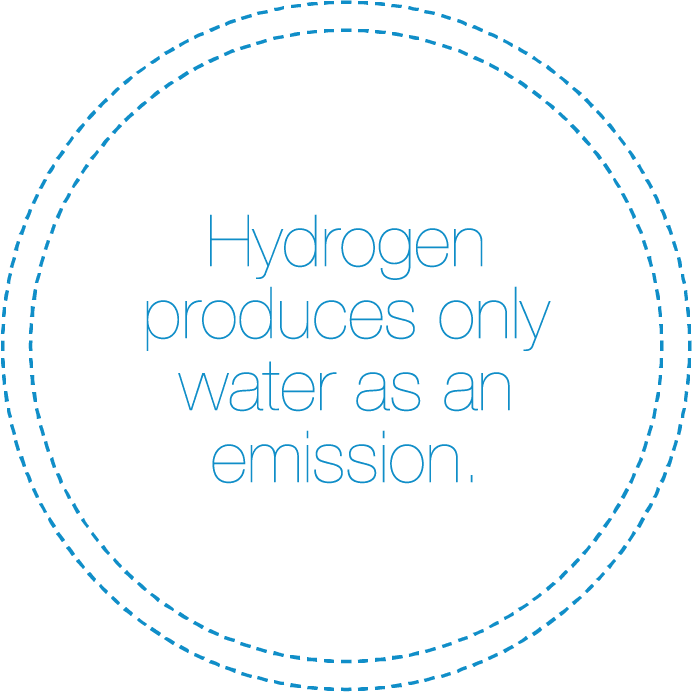Demand for hydrogen is growing
Global demand for hydrogen is growing at a remarkable rate. According to the Hydrogen Council, hydrogen could supply up to a fifth of global energy needs and generate a market worth US$2.5 trillion by 2050.
A global, clean energy solution
Hydrogen is a clean, adaptable energy and a commodity of the future. The most plentiful element in the universe, it can generate heat and power for everyday commercial, transport and residential use.
Hydrogen is also an energy ‘carrier’, meaning it is very effective for storing the energy used to produce it. It has the exciting potential to enable an energy transition that will result in a substantial reduction of global carbon emissions.
Exciting potential
Only certain countries, like Australia, have the capacity to produce hydrogen at scale. Australia’s large brown coal reserves, such as those in Victoria’s Latrobe Valley, can be used to create a new and thriving hydrogen export industry.
Establishing a safe, cost effective global supply chain for hydrogen will present huge local economic benefits, the capacity to generate a significant number of jobs and a future clean energy source for domestic use in Australia.

Why is hydrogen a good energy source?
Why hydrogen from Victorian coal with Carbon, Capture and Storage (CCS)?
Urgent Emissions Reductions
Climate change is a massive global threat requiring urgent action, and clean hydrogen can play a key contributing role.
HESC has a first-mover advantage with potential to be the first commercially viable clean hydrogen project with export in Australia. The HESC Project has potential to contribute to decarbonisation quickly, including in hard to abate sectors, while other hydrogen production methods build technical and economic feasibility over time.
For each year it operates at commercial scale, the HESC Project could produce 225,000 tonnes of hydrogen. Using CSIRO data, we estimate this could reduce global CO2 emissions by 1.8 million tonnes per year, equivalent to taking 350,000 petrol engine cars off the road.
Rapid Scale
Very large quantities of clean hydrogen need to be produced to meet growing demand and reduce CO2 emissions, which is why we believe all forms of clean hydrogen production should be pursued.
According to Australia’s former Chief Scientist Dr Alan Finkel, scaling up hydrogen to 2018-equivalent LNG exports requires a solar energy facility with eight times more annual generation than Australia’s total electricity generation today.
Scaling up production of clean hydrogen from coal with CCS is considered comparatively simple compared to renewable methods because the technology has been in use for decades – globally there are five low-carbon hydrogen production facilities with CCS in operation.
When it comes to this type of hydrogen production, Victoria has a significant competitive advantage due to its abundant, world-class coal resources and world-leading potential for CCS, all within the Gippsland region. Renowned for its existing excellence through its mining and power industry, Gippsland also has existing skills and assets that provide a strong foundation for the production of hydrogen.
These factors give the HESC Project the ability to rapidly scale up clean hydrogen production, which can occur 24/7.
Economics
Producing hydrogen using non-renewable sources with CCS, as assessed by the International Energy Agency and US Department of Energy, is the most economical way to produce clean hydrogen at scale.
Due to the falling cost of renewable energy and the abundant availability of solar and wind resources, Australia has the potential to produce renewable hydrogen for global export at a competitive price, in the future.
However, the global hydrogen market is highly competitive with countries including Russia, Norway and Saudi Arabia expanding production capabilities.
Opportunities for Australia
Momentum is growing in Australia for a hydrogen industry.
The Australian Government’s Technology Investment Roadmap and National Hydrogen Strategy identify clean hydrogen and carbon capture and storage (CCS) as priority technologies to lower emissions.
Australia can export over 500,000 tonnes of hydrogen to East Asia by 2030, worth an estimated $2.2 billion.
Producing clean hydrogen with coal also provides a viable roadmap for the Latrobe Valley’s energy workers looking to transition to a new industry. A commercial HESC Project has the potential to create thousands of sustainable jobs in Gippsland and create a thriving hydrogen export industry with huge local economic benefits.
Japan’s Hydrogen Future
Japan is committed to a clean energy future and is investing in the technology and global supply chain partnerships to become a ‘hydrogen society’ by 2050.
In 2015, Japan became the first country in the world to introduce stationary hydrogen fuel cells into households. Today more than 300,000 Japanese homes have a fuel cell installed.
Hydrogen demand in transport is also booming, with more than 3,000 fuel cell electric vehicles (FCEVs) on the roads now.
Key targets of the Japanese Government’s hydrogen energy strategy, Basic Hydrogen Strategy, include:
2030 – Development of CO2-free international hydrogen supply chains
2030 – Large-scale hydrogen power generation will be operational and three million homes will have a hydrogen fuel cell and around 800,000 fuel cell electric vehicles on Japanese roads
2050 – Traditional residential energy systems and fuel cell vehicles to be able to replace conventional gasoline mobility and fuel.
